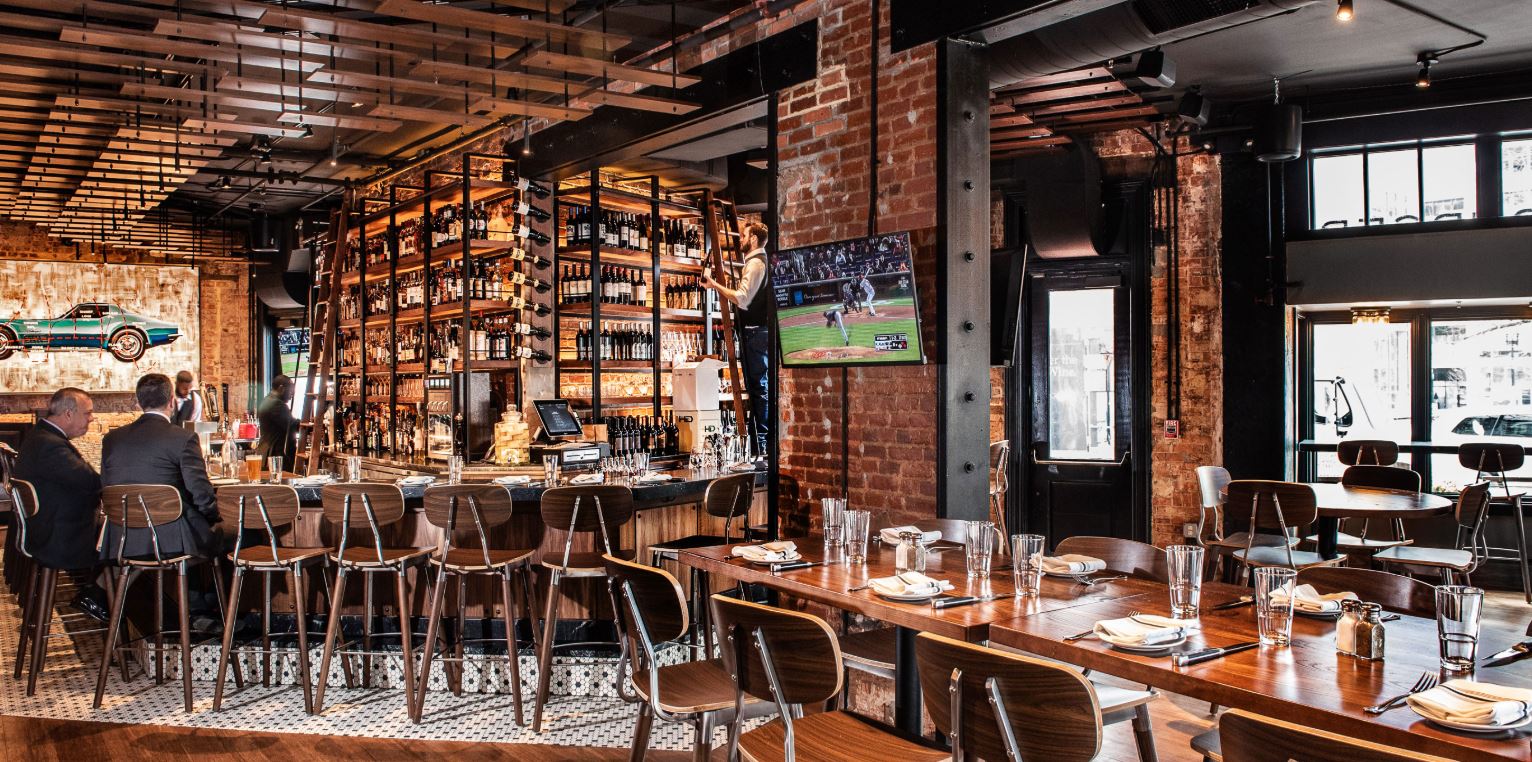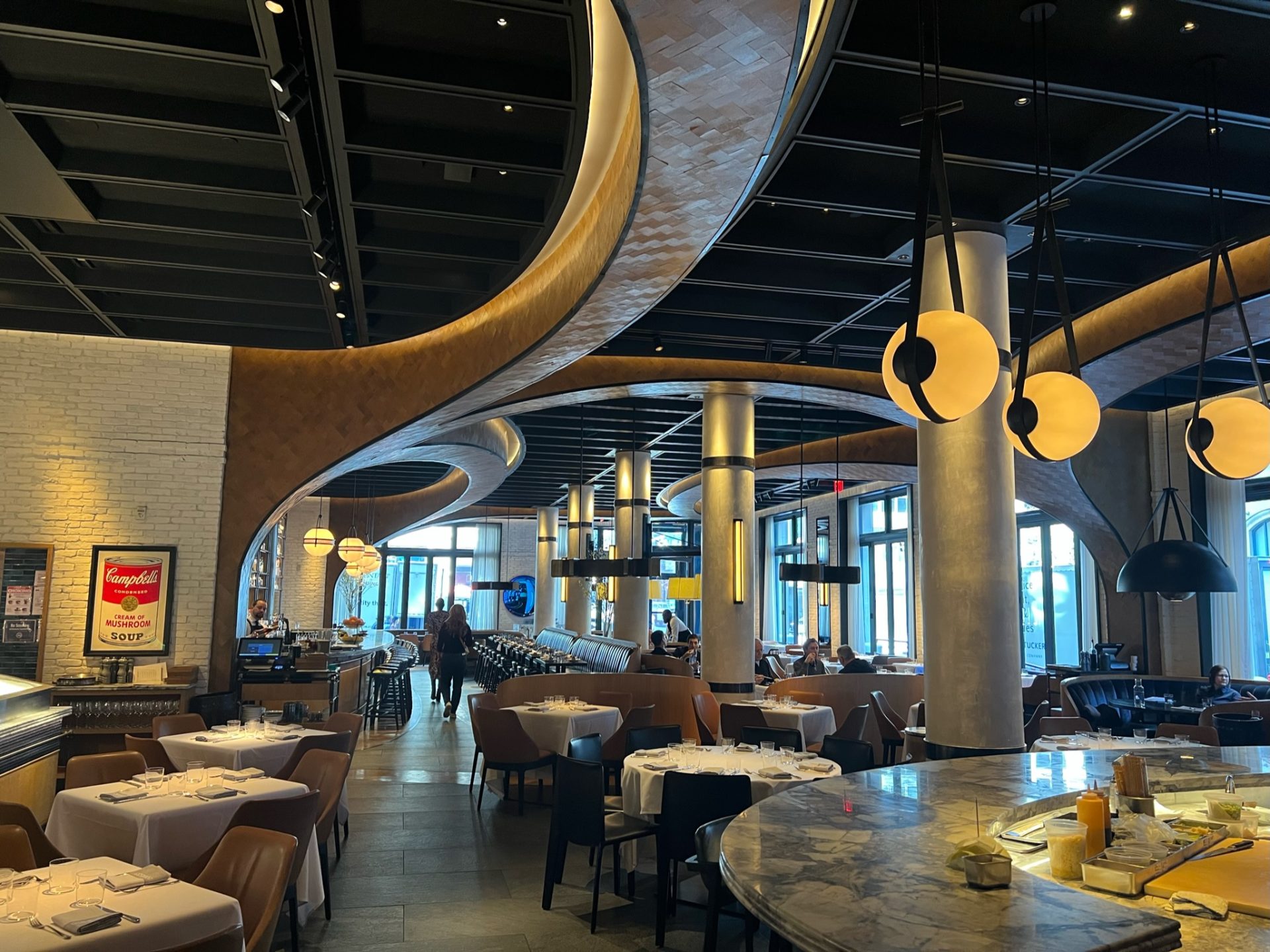Fine Dining Experience Islamabad: Enjoy Glamorous Culinary Delights
Fine Dining Experience Islamabad: Enjoy Glamorous Culinary Delights
Blog Article
Savor Genuine Eastern Cuisine With a Pan-Asian Spin for a Cooking Experience
Embarking on a culinary journey via genuine Oriental food, enhanced with a Pan-Asian spin, provides an unique opportunity to check out the rich tapestry of flavors that specify the area's varied culinary practices. As you contemplate these luring meals, consider the cultural stories and historic impacts that form them, each bite using a tale waiting to be found. Romantic restaurants Islamabad.

Checking Out Pan-Asian Tastes
In the realm of worldwide gastronomy, Pan-Asian food attracts attention for its impressive variety and the unified interplay of flavors from numerous Eastern societies. This cooking method celebrates the abundant practices and unique active ingredients found throughout the continent, producing a tapestry of tastes that is both enjoyable and interesting. Secret to Pan-Asian cuisine is its ability to balance contrasting tastes-- wonderful, salty, spicy, and sour-- while highlighting the freshness and quality of each ingredient.
From the umami-rich soy sauce of Japan to the intense chili peppers of Thailand, Pan-Asian food supplies a substantial palette of flavors. These aspects are usually integrated in innovative means, boosting recipes with layers of intricacy. As an example, using aromatic natural herbs such as lemongrass and cilantro, common in Vietnamese and Thai food, adds a refreshing illumination to dishes, while the unification of coconut milk provides a creamy, rich structure.
The focus on fresh fruit and vegetables and aromatic flavors ensures that each dish is not only a banquet for the palate however additionally for the detects. Pan-Asian cuisine welcomes restaurants to start a cooking journey, discovering the substantial and differed landscapes of Oriental gastronomy with every bite.
Blend Recipes to Attempt
While Pan-Asian cuisine is commemorated for its conventional tastes, the contemporary culinary landscape is progressively welcoming blend meals that blend these traditional components with impacts from various other regions. This ingenious approach not just honors the rich heritage of Oriental culinary arts however also presents unique taste experiences that appeal to contemporary palates.
A prime example of such a blend recipe is the Korean-Mexican taco, where seasoned bulgogi beef is covered in a cozy tortilla, covered with kimchi and a hot gochujang-infused salsa. This combination marries the vibrant, savory flavors of Korea with the vivid, fresh elements of Mexican cuisine. Similarly, sushi burritos have gained appeal, amalgamating the delicate artistry of Japanese sushi with the passionate, hand-held benefit of a burrito, usually featuring fusion active ingredients like tempura shrimp and avocado with a drizzle of wasabi mayo.
An additional noteworthy dish is Thai curry ramen, which instills the luscious, aromatic flavors of Thai curry into the calming brew of traditional Japanese ramen, creating an unified blend that entices the senses. These blend recipes prolong beyond simple uniqueness; they stand for a cooking discussion in between cultures, motivating expedition and development in the world of Pan-Asian cuisine.
Crucial Components and Seasonings
To truly appreciate Pan-Asian food, one should recognize the important active ingredients and seasonings that create its structure. This diverse cooking style attracts from a rich tapestry of Eastern customs, utilizing a harmonious mix of tastes and structures. Key components include soy sauce, fish sauce, and oyster sauce, which pass on a tasty umami depth crucial to Asian dishes. Complementary to these are rice vinegar and mirin, lending a delicate acidity and sweet taste.
Aromatic lucky house aspects are pivotal, with garlic, lemongrass, and ginger being common throughout different Pan-Asian recipes. These active ingredients provide a great smelling base that enhances the intricacy of tastes. Flavors such top article as star anise, cardamom, and cinnamon present heat and personality, echoing influences from areas like China and India.

Cooking Strategies and Tips
Understanding the art of Pan-Asian food requires familiarity with its unique food preparation methods, each adding to the lively tapestry of tastes this culinary tradition is commemorated for. Central to these techniques is the stir-fry, a quick food preparation method that preserves the dietary stability and dazzling colors of components. Using a frying pan, the stir-fry method enables for also warmth circulation, important for attaining the characteristic texture and flavor equilibrium of Pan-Asian dishes.
Another basic strategy is steaming, specifically prevalent in Chinese cuisine. This gentle method keeps the natural flavors and nutrients of components, making it perfect for fish and shellfish and veggies. Dumplings, a precious staple, typically take advantage of steaming, resulting in soft, succulent appearances.
Grilling, additionally important, passes on great smoky midsts to recipes such as Korean bulgogi or Japanese yakitori (asian fusion restaurant). This strategy usually includes seasoning ingredients, enabling tastes to pass through deeply before food preparation over an open fire or warmer
Lastly, mastering the art of balancing tastes-- wonderful, sour, salty, bitter, and umami-- is vital. Effectively layering these elements can boost a dish from regular to amazing, offering a complex and pleasing cooking experience that symbolizes the significance of Pan-Asian food.
Eating Experiences Worldwide
Around the world, Pan-Asian food provides an unparalleled eating experience, celebrated for its rich tapestry of flavors and vibrant discussions. This cooking phenomenon has gone beyond social limits, catching the hearts and tastes of food enthusiasts worldwide. In cosmopolitan cities fresh York, London, and Sydney, Pan-Asian restaurants act as melting pots where cooking traditions from Thailand, Japan, China, and past merge, offering diners with an eclectic mix of recipes that highlight the area's diversity.
The global appeal of Pan-Asian food hinges on its ability to provide both credibility and innovation. Chefs skillfully wed conventional ingredients such as lemongrass, soy sauce, and miso with Going Here modern strategies, resulting in meals that are both acquainted and refreshingly new. This blend allows diners to embark on a culinary trip that respects heritage while accepting modernity.
In addition, eating experiences are raised with thoughtfully made atmospheres that mirror the values of Pan-Asian looks. From minimal Japanese-inspired insides to lively Thai-themed areas, each restaurant offers an unique setting that matches the culinary offerings. As an outcome, clients are not just eating a dish but partaking in a social experience, making Pan-Asian eating a truly global sensation.
Verdict
The exploration of Pan-Asian food provides an extensive understanding of the complex interaction of tastes and cooking practices throughout Asia. By welcoming blend dishes such as Thai curry ramen and sushi burritos, the cooking journey not just highlights the flexibility of typical active ingredients yet likewise showcases ingenious modern techniques. This gastronomic journey, improved by cooking techniques and important spices, provides an unique opportunity to value the social variety and cooking creativity that specify Pan-Asian cuisine on a worldwide range.
Beginning on a cooking trip via genuine Eastern food, boosted with a Pan-Asian twist, offers an one-of-a-kind opportunity to discover the abundant tapestry of tastes that specify the region's varied cooking traditions.In the realm of international gastronomy, Pan-Asian cuisine stands out for its remarkable variety and the harmonious interplay of flavors from various Eastern cultures. Key to Pan-Asian cuisine is its capability to stabilize different tastes-- pleasant, salted, spicy, and sour-- while highlighting the quality and high quality of each ingredient.

Report this page